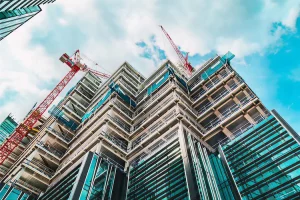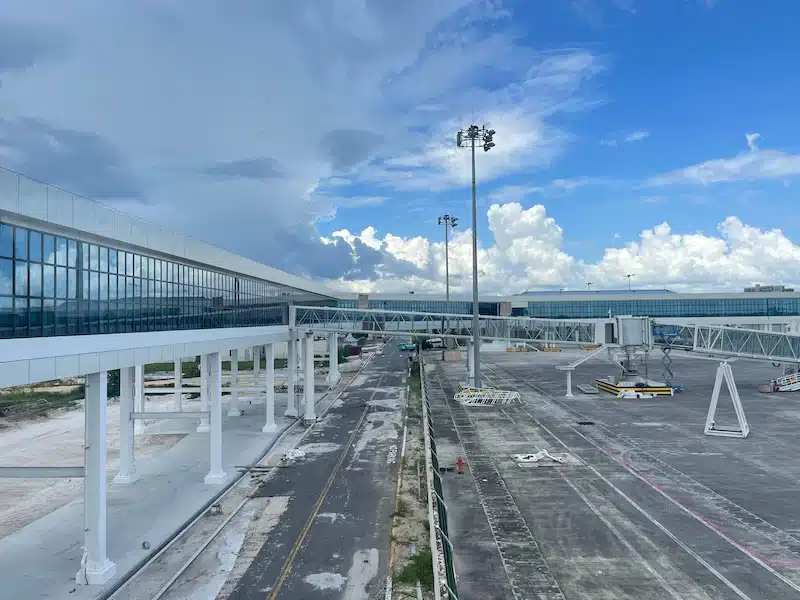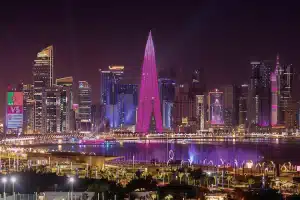
What Developers Really Look for in Façade Partners?
What Developers Really Look for in Façade Partners — and Why It Matters Picking the right façade partner may look easy at first. However, anyone who’s handled a

In airport design, managing sunlight is never just about choosing the right glass — it’s a design strategy that balances light, heat, and comfort across vast, transparent spaces.
Airports are some of the toughest places for façade engineers. With sunlight pouring in for hours, huge stretches of glass, and thousands of people waiting around, a good façade has to feel open and bright while keeping everyone comfortable and glare-free.
At SunFrame, we’ve learned through projects like the Cheddi Jagan International Airport (CJIA) Expansion in Guyana that true solar control goes beyond glazing specifications.
It lies in layered façade design, where glass, structure, and orientation perform together as a unified system.
Take the glass corridors and boarding bridges as examples, these are among the most exposed zones in any airport.
Their transparent façades invite daylight and connect travelers to the outside world, yet face the harshest solar radiation and the greatest temperature variations.
To manage these variables, SunFrame’s system integrates multiple layers of defense and design intent:
Low-E Insulated Glass — the subtle blue-grey tint reduces infrared and UV transmission while preserving visual clarity and natural light.
Exposed Frame Curtain Wall System — provides both transparency and strength, reinforced with diagonal bracing to withstand coastal wind pressure.
Aluminum Veneer Panels & Deep Mullions — add shade and depth, softening sunlight contrast and defining architectural rhythm at the same time.
High-Performance Coatings — fluorocarbon finishes resist humidity, corrosion, and salt spray. This is essential in Guyana’s tropical coastal climate.
After considering the above elements, the result is both energy-efficient and serene, with light-filled walkways that stay bright yet cool, transparent yet carefully tuned for thermal comfort.


Solar control is not simply achieved through “better glass,” but through careful coordination of materials and geometry.
At CJIA, the façade orientation was deliberately studied to handle strong equatorial sunlight.
The vertical glass walls allow daylight to flood the interior corridors. Meanwhile, the Low-E coatings and optimized shading coefficient prevent excessive heat buildup.
The shifting shadow patterns across the floor reveal a high light transmission rate, whereas the infrared heat has been effectively filtered out.
Even the structure itself contributes to performance. Deep mullions act as built-in shading fins, and the tight integration between ceiling and curtain wall joints reflects precise installation and airtight detailing, which are key factors for thermal stability.
SunFrame’s approach extends beyond engineering, emphasizing how passengers experience the space.
The transparent façade creates a sense of “walking with the sky”, turning transitional zones into open, uplifting environments.
Light moves rhythmically along the corridor, offering both orientation and serenity. It’s actually a subtle emotional balance for travelers in transit.
Through blending technical precision with architectural empathy, SunFrame’s façades transform sunlight from a challenge into a design asset. This approach enhances comfort, improves efficiency, and reinforces the identity of the terminal itself.

From the Caribbean to the Middle East, SunFrame continues to face the same design question:
How do we invite light — without letting heat in?
Through advanced engineering, environmental sensitivity, and meticulous fabrication, SunFrame continues to deliver façades that perform as beautifully as they look — even under the world’s strongest sunlight.

What Developers Really Look for in Façade Partners — and Why It Matters Picking the right façade partner may look easy at first. However, anyone who’s handled a

Green Building Trends: Aluminum vs. Stainless Steel for Living Façades As green building shifts from trend to standard, the building’s “skin” is undergoing a transformation.

Burj Al Mana Tower: The Story Behind Its Complex Façade and Engineering Rising over Doha’s West Bay, the Burj Al Mana Tower has a story

Every Detail Counts: Understanding SunFrame’s Product Pricing In the world of high-performance windows and curtain walls, every product has a clear cost logic behind it. At